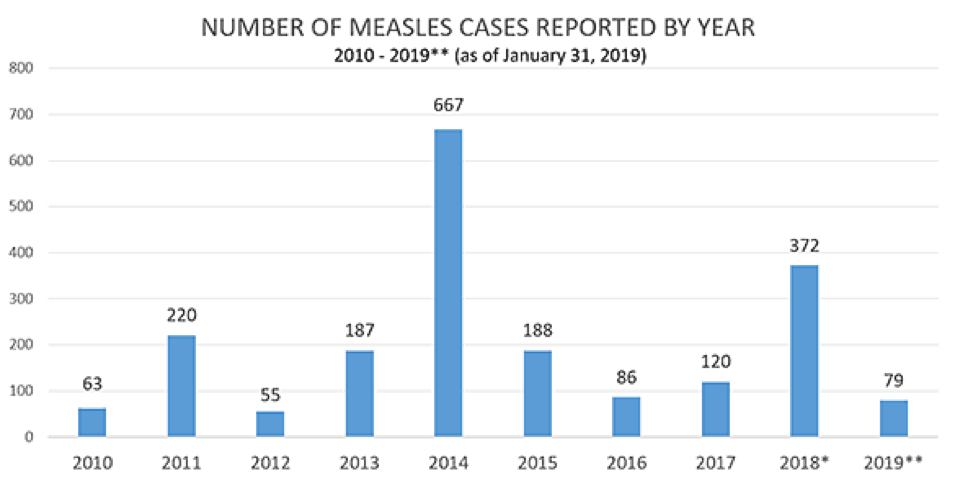From January 1 to 31, 2019, there are more than 80 individual cases of measles. States that reported cases to CDC are California, Colorado, Connecticut, Georgia, Illinois, New Jersey, New York, Oregon, Texas, and Washington.
The CDC has confirmed 101 cases of measles in 2019. The reported cases of measles are from 10 different states within the U.S. In the majority of these states, measles has been traveling among people who have not received the vaccine and people who have not received the second dose of the vaccine. Last year there were 372 cases of measles confirmed.
Measles is one of the most contagious diseases and there is no specific antiviral treatment available. Even with modern medical care, measles can lead to brain damage and death. After contact with someone who has measles, it can take between 10 and 21 days for a person to develop symptoms. High fever, cough, runny nose, red eyes, and a bluish-white rash on the inner lining of the cheek are all symptoms of measles. These symptoms are then followed by a rash that spreads over the body. If left untreated, potentially fatal inflammation of the brain can develop.
Health officials have advised that the best way to protect children from measles is to have two doses of the MMR vaccine. The MMR vaccine protects against measles, mumps, and rubella which prevents the complications caused by these diseases. The vaccine is 97 percent effective when both doses are given. Vaccination rates have recently increased due to public concern over the outbreak. Children 1 through 6 years old should get the measles vaccine as a part of their routine vaccine schedule.


